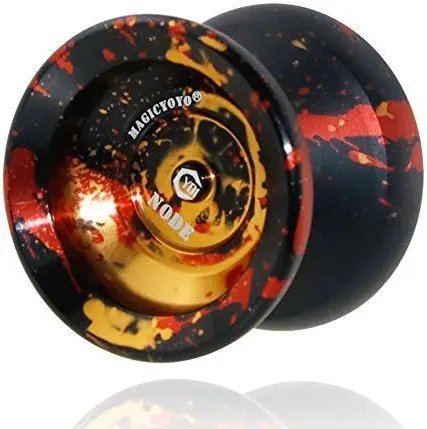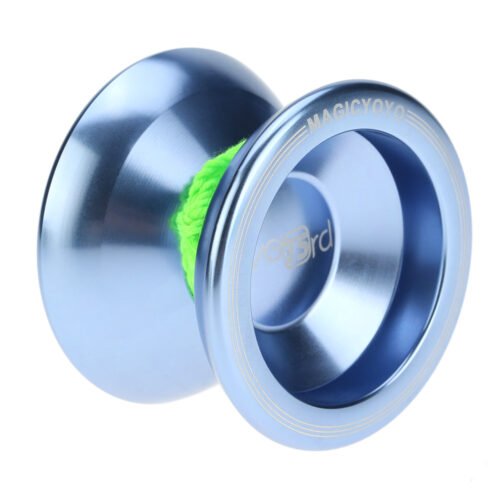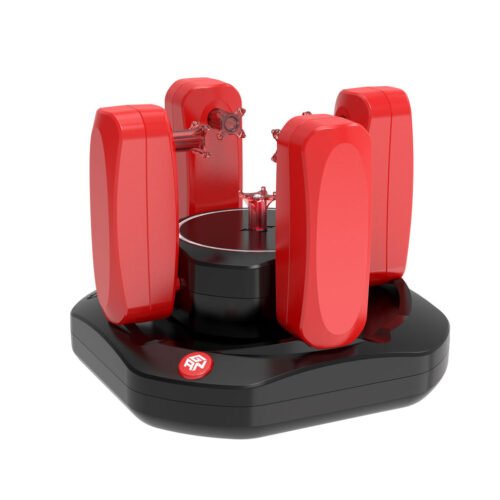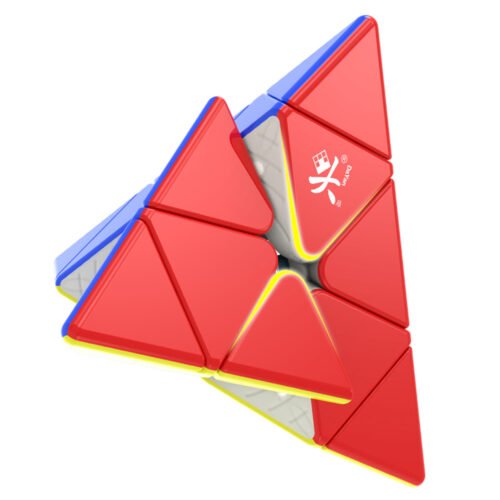Introduction to Rubik’s Cube Blindfolded Cubing

Table of Contents
Blindfolded cubing refers to the technique of solving a Rubik’s Cube without visual guidance. This intriguing challenge transforms the conventional cubing experience into a mental discipline that not only tests one’s speed but also sharpens cognitive abilities. The principle behind blindfolded solving involves memorizing the starting configuration of the cube and then performing the necessary moves from memory, culminating in accurately returning the cube to its solved state.
The allure of solving a Rubik’s Cube blindfolded lies in its combination of skill and mental prowess. Participants must engage in rigorous memorization techniques and enhance their spatial reasoning capabilities. As solvers commit algorithms and positions to memory, they hone their ability to visualize the cube’s transformations, which is vital in executing moves without visual cues. This process often requires extensive practice and a robust understanding of 3×3 BLD (blindfolded) techniques, making each successful attempt a significant achievement.
Challenges associated with blindfolded cubing are multifaceted. Cubers have to develop an effective memorization system—often using techniques such as letter pairs or associative imagery—to remember each section of the cube accurately. Common pitfalls include losing track during execution or misremembering the sequence of moves. These complexities contribute to the appeal and satisfaction that accompany mastering the art of blindfolded cubing.
Furthermore, engaging in this unique discipline fosters a deeper appreciation for the Rubik’s Cube itself. Beyond mere speed and dexterity, it invites enthusiasts to explore mental gymnastics that expand their cognitive toolkit. As solvers advance, they often discover various Rubik’s Cube tips and blindfolded techniques that contribute to their overall cubing proficiency. The rewarding nature of this sport makes it an intriguing pursuit for both casual hobbyists and serious competitors.
Understanding the Basics of the Rubik’s Cube
The Rubik’s Cube, a renowned 3D combination puzzle, comprises a core mechanism that allows the individual cube pieces to rotate in multiple directions. For beginners eager to embark on the journey of mastering the Rubik’s Cube blindfold method, it is imperative to grasp the fundamental concepts first. The most common variant is the 3×3 cube, a standard among cubers, but there are various types including the 2×2 cube, 4×4, and others, each presenting unique challenges.
To effectively solve a Rubik’s Cube, an understanding of basic notation is essential. Each rotation of a face of the cube is denoted by a letter, with ‘F’ representing the front face, ‘B’ for the back, ‘U’ for the upper face, ‘D’ for the down face, ‘L’ for the left face, and ‘R’ for the right face. A single letter indicates a clockwise turn, while an apostrophe denotes a counterclockwise turn. For instance, ‘U’ indicates a clockwise rotation of the upper face while ‘U’’ signifies a counterclockwise turn.
Critical to solving the Rubik’s Cube, especially if you aim to master the 3×3 blindfolded approach, is the idea of algorithms. These are sequences of moves executed to achieve a specific goal, such as positioning a piece correctly without disturbing the rest of the cube. Mastering various algorithms is essential in learning to solve the cube efficiently and effectively, as they provide a structured pathway to achieve the intended configurations with minimal trial and error.
Understanding these foundational concepts provides a solid introductory framework for aspiring cubers. As one becomes comfortable with the mechanics of the cube, the transition to solving techniques will be more intuitive, paving the way toward executing effective Rubik’s Cube tips and strategies.
Techniques for Blindfolded Solving
Solving a Rubik’s Cube blindfolded, often referred to as 3×3 blindfolded solving or BLD, requires a unique set of techniques that differ from traditional solving methods. The foundation of successful blindfolded solving lies in memorization and execution. The memo method is widely recognized as an effective technique for this purpose. This approach involves creating mental images or using specific words associated with pieces of the cube to facilitate memorization. By assigning distinct images to various cube configurations, solvers can enhance their recall during the execution phase.
In addition to the memo method, the execute-and-remember strategy plays a crucial role in blindfolded solving. This technique allows the solver to perform a sequence of moves while retaining memory of the initial positions of the pieces. By carefully executing algorithms and visually tracking the cube’s state, one can commit the necessary moves to memory. It’s essential to practice these techniques regularly to improve speed and accuracy when solving the Rubik’s Cube blindfolded.
Memory enhancement methods, such as mnemonic devices and chunking, can significantly assist in memorizing larger sequences of cube positions. Chunking, in particular, involves grouping multiple pieces into smaller, manageable units, allowing for quicker recall. As solvers practice and hone these skills, they often notice improved times for their 3×3 BLD attempts. These strategies not only serve to improve overall memorization but also aid in reducing the cognitive load during the solving process.
For those looking to advance their blindfolded solving abilities, regularly revisiting these techniques and adapting them to personal preferences may lead to substantial progress. Engaging with online communities and participating in competitions can also provide valuable insights and tips to further enhance blindfolded Rubik’s Cube solving skills.
Step-by-Step Guide to Memorizing the Cube
Memorizing the configurations of a Rubik’s Cube is an essential skill for anyone seeking to solve the cube blindfolded. This process involves developing strong visualization techniques and employing memory aids to retain crucial information. To start, it is vital to understand the basic layout of the cube, as familiarity with its structure will facilitate the memorization process.
One effective method for retaining the necessary sequences is chunking. Instead of attempting to memorize the entire set of algorithms or positions at once, break the cube into smaller, more manageable sections. For instance, focus on understanding the corner pieces first. As you begin to identify how these pieces move and interact within the 3×3 BLD framework, you can gradually expand to the edge pieces, working your way towards a comprehensive understanding of the cube’s layout.
Visualization plays a crucial role in memorizing a Rubik’s Cube for blindfolded solving. It is advisable to mentally picture the cube and its movements as you practice solving it. The more you can conjure up a clear image of the cube’s configuration in your mind, the more efficient your memory will become. By closing your eyes and imagining the specific steps and routes you need to take during a solve, you will strengthen your cognitive connection to the cube.
Practice is key in this learning process. Regularly attempt to memorize and recall different cube states. Using memory techniques like mnemonic devices can prove beneficial, as associating letter sequences with memorable words or images can significantly enhance recall ability. Practice these rubik’s cube tips consistently, gradually increasing the complexity of the states you wish to memorize. This approach will build not only memory but also confidence as you prepare to take on the challenge of solving the Rubik’s Cube blindfolded.
Through these step-by-step techniques, you will find yourself progressing in understanding the nuances of the 3×3 blindfolded solve. Commitment to mastering these skills is essential for improvement.
Practicing Blindfolded Solving: Tips and Tricks
Practicing to solve a Rubik’s Cube blindfolded transitions your skills from simple tactile recognition to a more complex memorization-based approach. Beginners should first ensure they possess a solid grasp of the 3×3 BLD (Blindfolded) solving techniques, as this foundation significantly eases the shift to blindfolded solving. Start with ensuring that you can comfortably solve the cube whilst able to see. Familiarity with the cube’s movements is crucial in eliminating confusion during blindfolded attempts.
One effective exercise is to memorize the cube’s configuration before placing on a blindfold. A common technique involves visualizing each face of the cube and developing mnemonic devices to aid in remembering the sequence of moves. For instance, you can use an acronym to represent the unique sequences you have memorized. This not only helps reinforce memory but also creates a framework for your Rubik’s Cube tips. When practicing, gradually extend the time between memorization and solving to help simulate the experience of blindfolded solving.
Additionally, start by practicing on small segments of the cube. For example, focus first on two layers, memorizing how they look then practicing the moves while blindfolded. Over time, you will build up to solving the entire cube. Supplement your practice with Rubik’s cube blindfolded tips available from seasoned solvers in online forums or communities. These resources provide insights into specific memory techniques and blindfolded methods, allowing you to adapt and refine your approach.
Lastly, choose a time for your practice when you are mentally alert. The capacity for memorization can fluctuate; thus, identifying when you are most focused will enhance your training efficacy. Make the shift from solving with sight to blindfolded gradually, and remember to maintain a relaxed mindset as this can significantly impact your performance. In conclusion, with dedication and structured practice, mastering the art of Rubik’s Cube blindfolded solving becomes an attainable goal.
Common Mistakes to Avoid When Learning
When embarking on the journey of solving a Rubik’s Cube blindfolded, there are several common mistakes that beginners often encounter. Understanding these pitfalls can significantly enhance the learning experience and accelerate progress. One of the most frequently observed mistakes is improper memorization techniques. Novice cubers may attempt to memorize sequences of moves without first truly comprehending the cube’s structure and patterns, which is crucial for effective solving. Failing to master the various algorithms associated with the 3×3 BLD (Blindfolded) method may lead to confusion during execution, as the reliance solely on rote memorization diminishes problem-solving skills.
Another mistake that new cubers often make is rushing through practice sessions. Solving a Rubik’s Cube blindfolded requires not only speed but also precision and accuracy. Many learners underestimate the importance of taking deliberate, paced practice sessions. This approach allows for a deeper understanding of the cube’s mechanics and ensures that muscle memory is appropriately developed. Rushing can result in missed opportunities to recognize crucial patterns that play a vital role in achieving proficiency in blindfolded solves.
Moreover, overlooking the cube’s inherent patterns is a common oversight. New cubers often focus solely on memorizing algorithms without paying attention to how each move influences the cube’s configuration. This lack of awareness can greatly hinder their ability to solve the cube efficiently. It is essential to appreciate the cube’s dynamics, recognizing how pieces move relative to one another, as this understanding can help in navigating more complex scenarios.
Ultimately, avoiding these common mistakes not only improves proficiency in solving a Rubik’s Cube blindfolded but also contributes to a more fulfilling and enjoyable experience in the cubing community. By dedicating time to mastering techniques and developing a thorough understanding of cube patterns, learners will find themselves on a quicker path to success.
Where to Buy Rubik’s Cubes in India
For enthusiasts looking to purchase Rubik’s Cubes in India, one of the most reliable online sources is themcubes.in. This platform specializes in a variety of puzzles and speed cubes, ensuring that both newcomers and seasoned cubers can find the right cube for practicing techniques such as the 3×3 blindfold method.
Themcubes.in offers an extensive range of Rubik’s Cube products, including standard cubes and advanced puzzles designed for optimal speed and performance. Notably, their collection includes options tailored for those interested in mastering the art of solving a Rubik’s Cube blindfolded, which can enhance problem-solving skills and dexterity.
In terms of customer convenience, themcubes.in provides a user-friendly shopping experience, along with efficient shipping policies. Customers can expect delivery within 3-5 days, making it a suitable option for those eager to begin their cubing journey. Furthermore, the site offers free shipping on orders over ₹499, which adds to its appeal. This ensures that serious cubers can stock up on multiple cubes or related accessories without worrying about additional shipping costs.
Another advantage of purchasing from themcubes.in is their customer-friendly 30-day exchange policy. This policy allows customers to return products, should they not meet their expectations or if they require a different type of cube for their blindfolded practice sessions. It fosters confidence in purchasing, especially for individuals attempting to develop their skills in solving the 3×3 BLD (blindfolded) technique.
Overall, for anyone in India looking to buy Rubik’s Cubes, themcubes.in stands out as a trustworthy resource to explore various options and enjoy a seamless shopping experience.
Benefits of Using Quality Speed Cubes
When it comes to solving a Rubik’s Cube blindfolded, the choice of cube plays a crucial role in your overall performance and enjoyment of the activity. High-quality speed cubes are specifically designed to cater to the needs of serious cubers, especially for techniques like the 3×3 blindfold method. These cubes come equipped with features that facilitate smoother and faster turns, allowing for quicker execution during blindfolded solving sessions.
The design and mechanics of quality speed cubes significantly impact the ability to solve the cube efficiently. With the right cube, cubers can achieve greater control, which is particularly important when executing complex algorithms without visual cues. A good speed cube offers low friction and minimal resistance, allowing for rapid rotations, which can lead to improved times. For those pursuing the 3×3 BLD (blindfolded) technique, the advantage of reduced struggle with the cube becomes evident, as less effort is needed to make accurate turns.
In addition to performance, quality speed cubes enhance the overall enjoyment of solving. They are typically constructed with durable materials and boast a comfortable feel, which encourages longer practice sessions. For novice cubers, seeking out Rubik’s Cube tips online can guide them towards selecting the most suitable speed cube that meets their personal preferences in terms of feel and responsiveness. Moreover, engaging with a well-manufactured cube may instill confidence in those attempting Rubik’s cube blindfolded tips for the first time.
Ultimately, investing in a high-quality speed cube is essential for anyone looking to excel in blindfolded solving. The right equipment can transform challenging blindfolded methods into a more manageable and rewarding experience, enabling cubers to focus on mastering the art of the Rubik’s Cube.
Conclusion: Your Journey into Blindfolded Cubing
As we have explored throughout this article, mastering the art of solving a Rubik’s Cube blindfolded is a rewarding challenge that requires dedication and practice. The techniques and tips shared, particularly those related to the 3×3 blindfolded method, provide a solid foundation for both new and experienced cubers. It is essential to begin with understanding the mechanics of the Rubik’s Cube and gradually incorporating memory techniques, such as visualizing algorithms and breaking the cube down into manageable steps.
Additionally, we acknowledged the importance of patience in this intricate process. Blindfold solving, or BLD, can initially seem daunting, but with consistent practice, you will find your skills improving. Each attempted solve is a learning experience that brings you closer to fluency in solving the cube without sight. Moreover, honing your ability to memorize sequences will enhance your overall Rubik’s Cube-solving strategy and boost your performance in the 3×3 BLD competition format.
For those eager to start their journey, selecting the right tools is crucial. High-quality cubes designed for blindfold solving can make a significant difference in your experience. Exploring marketplaces like themcubes.in not only allows you to discover various types of Rubik’s Cubes but also ensures you have access to resources that can aid your growth. From beginner-friendly options to advanced models, you can find a cube that aligns with your personal goals.
In conclusion, embracing the journey into blindfolded cubing is an exciting venture. As you embark on this path, remember that regular practice, patience, and using the proper tools will set you on the course towards success. With commitment and the right approach, you will soon enjoy the satisfaction that comes with mastering the Rubik’s Cube blindfolded.
Looking for International purchases, visit mcubes global store!






